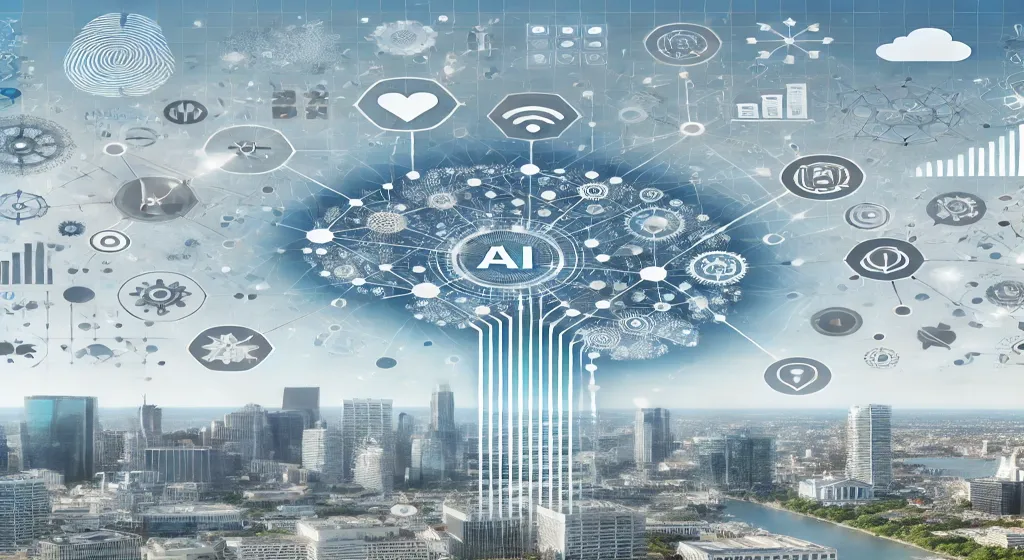The Rise of TensorFlow: Transforming Machine Learning and AI
In today’s rapidly evolving technological landscape, machine learning (ML) and artificial intelligence (AI) are spearheading a revolution that impacts nearly every industry. At the core of this transformation is TensorFlow, an open-source machine learning library developed by Google Brain. Since its release in 2015, TensorFlow has become a leading framework, empowering researchers, developers, and businesses to create cutting-edge AI models. This article explores TensorFlow’s origins, its key features, and the transformative effects it has had across multiple sectors.
What is TensorFlow?
TensorFlow is an open-source framework designed for deep learning and other machine learning tasks. Created by Google, it has gained widespread recognition for its flexibility, scalability, and the comprehensive ecosystem it offers. TensorFlow facilitates the development of ML models ranging from image recognition to natural language processing (NLP) and beyond.
It supports both low-level operations (for users who want maximum control over their models) and high-level abstractions, making it suitable for both beginners and advanced users. Developers can design, train, and deploy complex neural networks, and its versatile nature allows TensorFlow to be used in a wide variety of applications, from research prototypes to full-scale production systems.
The Origins of TensorFlow
TensorFlow traces its roots back to DistBelief, an earlier deep learning system developed by Google in 2011. DistBelief was specifically designed for large-scale deep learning tasks but had limitations when it came to flexibility and scalability. The need for a more adaptive system led to the creation of TensorFlow. Launched as an open-source project in November 2015, TensorFlow quickly gained momentum, making advanced machine learning techniques accessible to a broader audience.
The release of TensorFlow marked a pivotal moment in AI and machine learning, as it democratized access to powerful tools that were once reserved for large tech companies and specialized research institutions. Today, TensorFlow is not just a framework but a foundational tool driving innovation in deep learning across academic, research, and commercial domains.
Key Features of TensorFlow
Flexibility and Scalability
One of TensorFlow’s most notable features is its flexibility. It supports multiple programming languages, including Python, C++, and JavaScript, allowing developers to choose the best tool for their specific needs. TensorFlow’s architecture also enables it to run on various platforms, from desktops to mobile devices and distributed computing environments. This scalability ensures that TensorFlow can handle everything from small-scale experiments to large-scale production deployments.
Comprehensive Ecosystem
TensorFlow offers a vast array of tools and libraries that simplify the development of machine learning models. TensorFlow Extended (TFX) provides end-to-end support for deploying production machine learning pipelines, while TensorFlow Lite is optimized for mobile and embedded devices. TensorFlow.js brings machine learning capabilities to JavaScript developers, enabling model development and deployment directly in the browser. Additionally, TensorFlow Hub allows for the reuse of pre-trained models, accelerating the development process and reducing the need for extensive computational resources.
Community and Support
As an open-source project, TensorFlow benefits from a robust community of developers and researchers. This active community contributes to continuous improvements, extensive documentation, and a wealth of tutorials and resources. The support from Google and collaborations with industry leaders further bolster TensorFlow’s credibility and reliability. The TensorFlow community hosts regular events, hackathons, and conferences, fostering collaboration and knowledge sharing among practitioners worldwide.
How TensorFlow is Transforming Industries
Healthcare
TensorFlow is making a significant impact in healthcare, particularly in the areas of disease detection and diagnosis. With TensorFlow, machine learning models can analyze medical images and identify diseases such as cancer and diabetic retinopathy with remarkable accuracy. These models assist doctors by providing early detection of conditions, leading to improved patient outcomes. TensorFlow is also used in drug discovery, where it helps researchers predict molecular interactions and accelerate the development of new medications.
Healthcare institutions worldwide have adopted TensorFlow to enhance the quality of care by implementing AI models that assist doctors in making faster, more precise diagnoses.
Finance
TensorFlow’s predictive analytics capabilities are transforming the financial sector. Banks and financial institutions use TensorFlow to develop machine learning models that detect fraudulent transactions, predict market trends, and optimize investment strategies. TensorFlow-powered models enhance the security of financial systems while increasing profitability. Additionally, TensorFlow chatbots and virtual assistants are being used to deliver personalized financial advice, improving customer service.
Automotive
In the automotive industry, TensorFlow is integral to the development of autonomous vehicles. AI models built with TensorFlow process vast amounts of sensor data to make real-time driving decisions. This capability enhances road safety and vehicle performance. TensorFlow is also employed in predictive maintenance, allowing manufacturers to monitor vehicle health and anticipate mechanical failures before they occur, reducing downtime and maintenance costs.
Retail
TensorFlow plays a crucial role in optimizing supply chain management and improving customer experiences in the retail sector. Retailers use TensorFlow to analyze consumer behavior, predict demand, and manage inventory efficiently. TensorFlow also powers personalized recommendations, increasing sales and customer satisfaction. Moreover, computer vision applications built with TensorFlow enable automation of tasks such as shelf monitoring and product categorization, helping retailers streamline operations.
Education
In education, TensorFlow is empowering the development of intelligent tutoring systems and personalized learning platforms. These platforms use TensorFlow models to assess students’ strengths and weaknesses, delivering tailored educational content to enhance learning. TensorFlow also supports the automation of administrative tasks like grading and student record management, freeing up educators to focus more on teaching.
TensorFlow’s Impact on AI Research
TensorFlow has democratized access to powerful machine learning tools, fostering innovation and research. Academic institutions and research organizations utilize TensorFlow to explore cutting-edge AI concepts and develop new algorithms. The ability to prototype and test models quickly accelerates the pace of AI advancements, contributing to breakthroughs in various fields. TensorFlow’s integration with other Google products, such as Google Cloud and Colab, provides researchers with scalable computing resources and collaborative environments, further enhancing their productivity. TensorFlow and PyTorch have become integral tools in advancing AI research, each offering unique strengths for different applications.
Challenges and Future Directions
While TensorFlow has achieved remarkable success, it also faces challenges. The rapid evolution of artificial intelligence and machine learning demands continuous updates and improvements to the framework. Ensuring compatibility with new hardware and software advancements is crucial to maintaining TensorFlow’s relevance. Additionally, the complexity of machine learning models can be a barrier for beginners, highlighting the need for more user-friendly tools and resources.
Looking ahead, TensorFlow’s future will likely involve deeper integration with emerging technologies such as quantum computing and edge AI. These advancements could unlock new possibilities for machine learning applications, from solving complex optimization problems to enabling real-time AI processing on low-power devices. The ongoing efforts to enhance TensorFlow’s performance, usability, and scalability will ensure its continued impact on the AI landscape.
TensorFlow’s rise as a leading machine learning library is a testament to its versatility, scalability, and robust ecosystem. By empowering developers and researchers with state-of-the-art tools, TensorFlow is driving innovation across multiple industries. As machine learning and AI continue to evolve, TensorFlow will undoubtedly remain a pivotal force in shaping the future of technology.
If you are interested in comparing PyTorch and TensorFlow and want to learn more about the differences and advantages of each, we recommend visiting this link. This article provides a comprehensive review of these two popular deep learning libraries.







